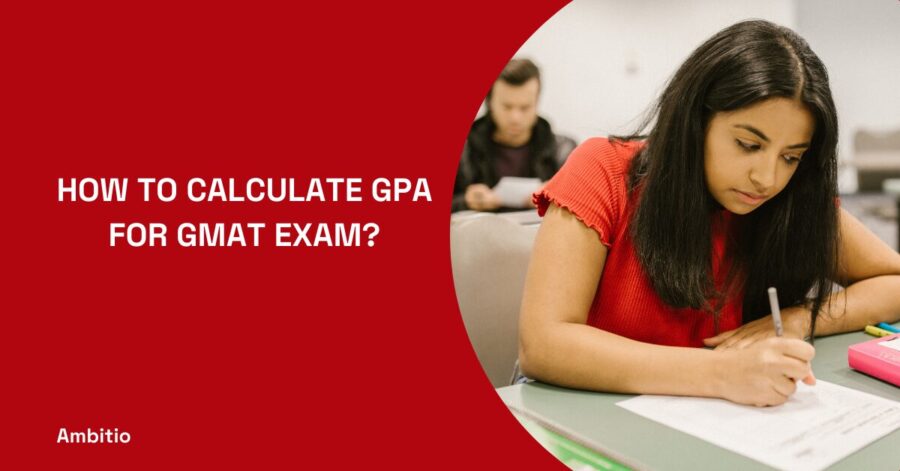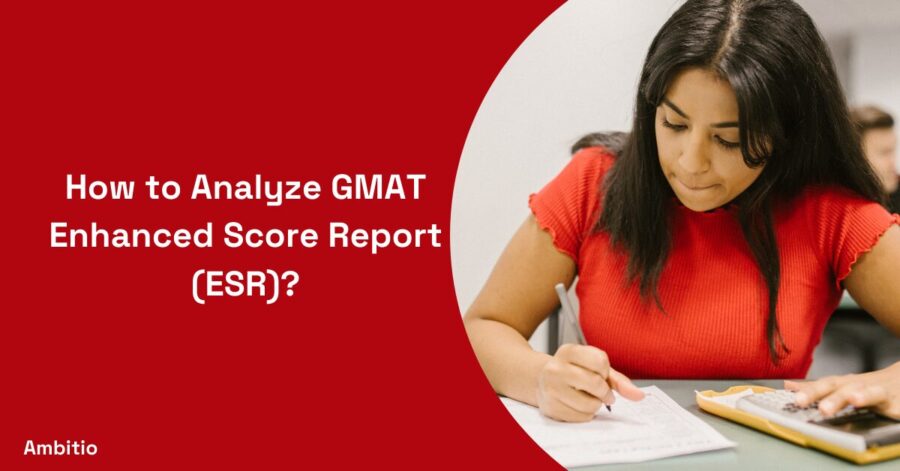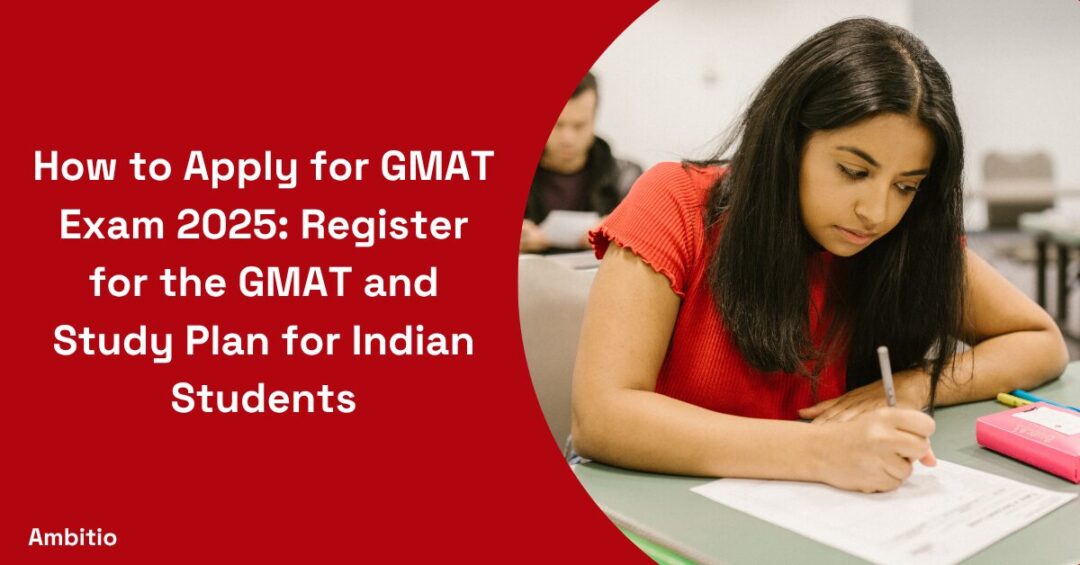3 September 2024
7 minutes read
GMAT for Non Maths Background – Preparation Strategies & Tips

Key Takeaways
- Non-math background students often find the Quantitative Section challenging, requiring mastery of arithmetic, algebra, and geometry.
- Building a strong foundation in basic math concepts and creating a structured study plan are crucial for success.
- Time management, elimination techniques, and critical thinking are essential strategies to effectively approach the Math sections of the GMAT.
The Graduate Management Admission Test (GMAT) is a critical step for anyone looking to enrol in an MBA program. However, for those with a non-mathematical background, the GMAT can seem particularly daunting. This blog will guide you through understanding the GMAT math section, how to prepare effectively, and strategies to help you ace the exam despite your non-math background.
GMAT Sections
The GMAT (Graduate Management Admission Test) consists of four sections, each designed to evaluate specific skills necessary for business school success:
- Analytical Writing Assessment (AWA):
- Purpose: Measures critical thinking and communication skills.
- Format: One essay analysing an argument.
- Time: 30 minutes.
- Integrated Reasoning (IR):
- Purpose: Assesses ability to analyse data from various sources.
- Format: 12 questions, including multi-source reasoning, graphics interpretation, two-part analysis, and table analysis.
- Time: 30 minutes.
- Quantitative Section:
- Purpose: Tests mathematical skills and problem-solving ability.
- Format: 31 multiple-choice questions, divided into problem-solving and data sufficiency.
- Content: Covers arithmetic, algebra, and geometry.
- Time: 62 minutes.
- Verbal Section:
- Purpose: Evaluates reading comprehension, critical reasoning, and grammar.
- Format: 36 multiple-choice questions, including reading comprehension, critical reasoning, and sentence correction.
- Time: 65 minutes.
Note: The GMAT’s total duration is approximately 3 hours and 7 minutes, and scores range from 200 to 800 based on performance in the Quantitative and Verbal sections.
Challenges Faced by Non-Math Background Students in GMAT

Non-math background students often find the following sections of the GMAT particularly challenging:
1. Quantitative Section
The GMAT Quantitative Section is designed to assess your mathematical skills and ability to reason quantitatively. This section measures your ability to solve quantitative problems, interpret graphic data, and analyse and interpret numerical data. Enrolling in the best GMAT Quant Online Course will help you better understand the Quant Section. Here’s a detailed look at the GMAT Quantitative Section:
Format and Structure
The very step involves the understanding of the structure to ace the GMAT quant section . The structure goes as follows,
- Number of Questions: 31 multiple-choice questions.
- Time Allotted: 62 minutes.
- Question Types: Two types of questions—Problem-Solving and Data Sufficiency.
Types of Questions
Quantitative section of the GMAT consists of two types of questions. Here are they,
1. Problem-Solving Questions
- Format: Standard multiple-choice questions.
- Focus: Test your ability to solve mathematical problems using logical and analytical reasoning.
- Content: Covers arithmetic, algebra, and geometry. These questions require you to apply mathematical concepts to find the correct answer from five options.
2. Data Sufficiency Questions
- Format: Each question consists of a question and two statements of data. You must decide whether the statements provide enough information to answer the question.
- Focus: Assess your ability to analyse a problem, recognize which information is relevant, and determine if the provided data is sufficient to solve the problem.
- Content: Also covers arithmetic, algebra, and geometry, but requires a different approach than Problem-Solving questions. You must evaluate the statements individually and together to determine if they provide sufficient data.
Content Areas Covered
The GMAT Quant topics covers the following areas.
- Arithmetic
- Basic operations: addition, subtraction, multiplication, and division.
- Fractions, decimals, percentages, and ratios.
- Integer properties and number theory.
- Algebra
- Solving equations and inequalities.
- Working with algebraic expressions and functions.
- Word problems involving algebraic concepts.
- Geometry
- Properties and relations of geometric shapes (e.g., circles, triangles, rectangles).
- Solid geometry (e.g., volume and surface area of three-dimensional shapes).
- Coordinate geometry.
- Basic trigonometry concepts.
2. Integrated Reasoning (IR) Section
The Integrated Reasoning (IR) section of the GMAT is designed to measure your ability to evaluate information presented in multiple formats from various sources. This section tests skills that are critical for business school and professional success, such as synthesizing data and interpreting complex information. It is important to master all the sections , so you can beat the GMAT. Here’s an overview of the IR section:
Format and Structure
Candidates appearing for the exam should understand the GMAT Integrated Reasoning syllabus and structure . Here is the structure of the IR section .
- Number of Questions: 12 questions.
- Time Allotted: 30 minutes.
- Question Types: Four different types.
Types of Questions
The Integrated Reasoning section consists of two types of questions . And, here are they,
1. Multi-Source Reasoning
- Format: Questions based on multiple sources of information, such as text passages, tables, graphs, or a combination.
- Task: Analyse the data from different sources and answer multiple-choice or true/false questions.
2. Graphics Interpretation
- Format: Questions based on graphical data, such as charts, graphs, or diagrams.
- Task: Interpret the graphical information and fill in the blanks or answer multiple-choice questions based on your analysis.
3. Two-Part Analysis
- Format: Each question has two components that you need to answer. These questions can involve quantitative, verbal, or a combination of skills.
- Task: Solve problems requiring complex reasoning and provide two answers that may be independent or interdependent.
4. Table Analysis
- Format: Questions based on data presented in a sortable table.
- Task: Determine if statements about the data are true or false based on your analysis of the table.
Tips to approach the GMAT Math section

Mastering GMAT time is possible only when you are thorough with all the sections. Here are a few tips that you can consider while approaching the Quantitative and Integrated Reasoning section of GMAT .
Quantitative Section Tips
By following the below tips , not just a student from a non maths background but everyone can solve the quantitative section of GMAT .
- Understand Question Types: Familiarize yourself with Problem-Solving and Data Sufficiency questions.
- Master Basics: Review arithmetic, algebra, and geometry fundamentals.
- Practice Regularly: Solve a variety of practice problems daily.
- Use Official Guide: Practice with GMAT Official Guide questions. Follow GMAT beginner’s guide if you are struggling on where to begin your preparation.
- Time Management: Practice pacing to complete all questions within the time limit.
- Elimination Techniques: Use elimination to narrow down answer choices.
- Focus on Data Sufficiency: Determine if statements provide enough information to solve the problem.
- Take Mock Tests: Simulate exam conditions with full-length practice tests.
- Review Mistakes: Analyse errors to identify and improve weak areas.
- Mental Math: Practice performing calculations mentally to save time.
Integrated Reasoning Tips
Consider following the below tips to solve the Integrated Reasoning section of GMAT .
- Understand IR Question Types: Familiarize yourself with Multi-Source Reasoning, Graphics Interpretation, Two-Part Analysis, and Table Analysis.
- Practice with Real Data: Work with real-world data sets.
- Integrate Information: Practice combining data from text, graphs, tables, and charts.
- Develop Analytical Skills: Focus on analysing and interpreting complex data.
- Time Management: Complete IR questions within the time limit.
- Use Prep Resources: Utilize GMAT prep books, courses and materials.
- Simulate Exam Conditions: Take timed practice IR sections.
- Accuracy: Ensure answers are precise and detailed.
- Simplify Problems: Break down complex questions into manageable parts.
- Review Answers: Learn from mistakes by reviewing practice question answers.
Effective GMAT Preparation Strategies
Stop wondering on how to start your GMAT preparation . With the right GMAT preparation strategies, you can master the quantitative section and achieve a competitive score. Here are some effective preparation strategies to follow:
1. Review Basic Math Concepts
- Focus Areas: Arithmetic, algebra, geometry, and basic statistics.
2. Understand the GMAT Format
- Understand the purpose of GMAT and familiarize yourself with the types of questions in the quantitative section, including Problem-Solving and Data Sufficiency.
3. Set Clear Goals
- Daily and Weekly Targets: Break down your study sessions into manageable chunks.
- Progress Tracking: Regularly assess your understanding and adjust your plan accordingly.
4. Allocate Study Time
- Consistent Practice: Dedicate specific hours each day to studying math.
- Balanced Approach: Don’t neglect other sections while focusing on GMAT math.
5. GMAT Official Guide
- Importance: Provides real GMAT questions and detailed explanations.
- Practice: Regularly solve problems from the guide to understand the test-makers’ logic and scoring 740 in GMAT never really seems a big deal to you anymore .
6. Online Prep Courses
- Structured Learning: Enrol in Courses that offer structured lessons and practice problems.
- Interactive Learning: Engage with video lessons, interactive quizzes, and practice tests.
7. Solve Practice Problems
- Variety: Ensure you practice a wide range of problem types.
- Difficulty Levels: Start with easier problems and gradually move to more challenging ones. By doing so , you will understand the tips and tricks on how to score a 750 in the GMAT.
8. Take Mock Tests
- Simulate Exam Conditions: Take full-length practice tests to get used to the test format and timing.
- Analyse Results: Review your answers, understand mistakes, and learn from them.
9. Understand the Format
- Unique Question Type: Data Sufficiency questions require a different approach than standard problem-solving questions.
- Strategy: Practice identifying when you have enough information to solve a problem without actually solving it.
10. Practice Specific Techniques
- Process of Elimination: Use logical reasoning to eliminate incorrect answer choices.
- Critical Thinking: Focus on understanding the statements’ sufficiency rather than solving the problem outright.
11. Time Management
- Pacing: Mastering GMAT time is really important .Practice pacing yourself to ensure you can complete all questions within the time limit.
- Skipping Questions: If you’re stuck on a question, move on and come back to it if time permits.
12. Answer Strategies
- Educated Guessing: Use elimination techniques to make educated guesses when necessary.
- Review Work: If time allows, review your answers to check for any mistakes.
13. Tutors and Study Groups
- Personalized Help: Consider hiring a tutor for personalized guidance.
- Peer Support: Join study groups to share resources, tips, and encouragement.
14. Online Forums
- Community Support: Participate in forums like GMAT Club to ask questions, share experiences, and get advice on how to crack the GMAT.
15. Stay Motivated
- Set Milestones: Celebrate small achievements to stay motivated.
- Positive Mindset: Believe in your ability to improve and succeed.
- Healthy Routine: Maintain a balanced study schedule with breaks to avoid burnout.
- Relaxation Techniques: Practice relaxation techniques like deep breathing or meditation to stay calm.
Conclusion
The GMAT may seem challenging for those from a non-mathematical background, but with the right approach and preparation, you can master the quantitative section. Focus on building a strong foundation, utilize quality study materials, and practice consistently.
With determination and the right strategies, you can achieve a GMAT max score and move one step closer to your dream of enrolling in a top business school. Remember, every GMAT journey is unique, and your hard work and persistence will pay off. Good luck!
Transform your GMAT preparation with Ambitio’s expert guidance. Our comprehensive approach includes personalized study plans, adaptive practice tests, and strategic insights, all designed to enhance your understanding and performance across the exam’s quantitative and verbal sections.
FAQs
What are the main topics covered in the GMAT Quantitative Section?
The Quantitative Section covers arithmetic, algebra, and geometry.
What sections are included in the GMAT?
The GMAT includes Analytical Writing Assessment (AWA), Integrated Reasoning (IR), Quantitative, and Verbal sections.
How can non-math students prepare for the GMAT Quantitative Section?
They can prepare by reviewing basic math concepts, practicing regularly, using quality study materials, and taking mock tests.
How can I improve my performance in the IR Section?
Practice with real-world data, develop analytical skills, and use prep resources to familiarize yourself with the question types.
How can I stay motivated during GMAT preparation?
Set clear goals, celebrate small achievements, and maintain a positive mindset to stay motivated throughout your preparation.
What is the format of the Integrated Reasoning (IR) Section?
The IR section consists of 12 questions, including multi-source reasoning, graphics interpretation, two-part analysis, and table analysis.

You can study at top universities worldwide!
Get expert tips and tricks to get into top universities with a free expert session.
Book Your Free 30-Minute Session Now! Book a call now




























